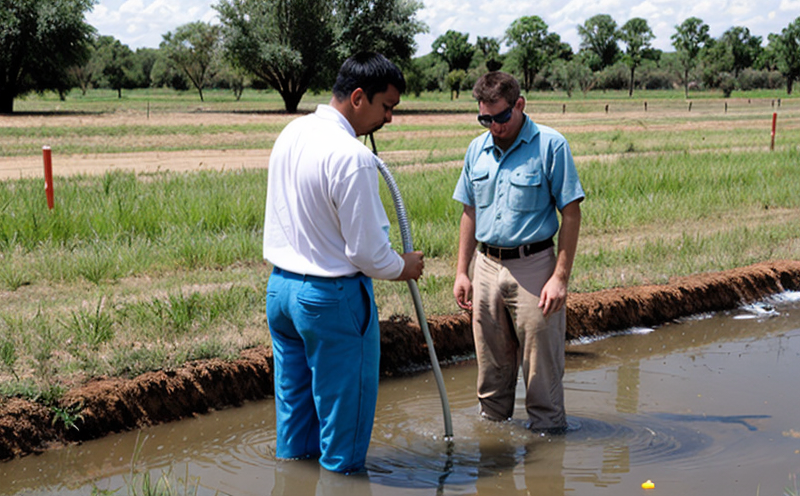ASTM D5092 Installation of Groundwater Monitoring Wells Test
The ASTM D5092 standard provides a detailed procedure for installing groundwater monitoring wells. This service ensures accurate and reliable measurement of ground water quality, which is critical for environmental compliance and management.
Groundwater monitoring is essential in assessing the impact of human activities on natural resources. The installation process described by ASTM D5092 involves several stages: site selection, well design, construction, testing, and documentation. Each step contributes to creating a robust monitoring system that can accurately reflect changes in groundwater quality over time.
The first stage is site selection, where the location of the monitoring well is carefully chosen based on its proximity to potential sources of contamination such as landfills or industrial sites. Once selected, the design phase follows which includes deciding upon the depth and type of casing needed for the well. This ensures that the well can effectively capture all necessary data without being compromised by external factors.
The construction stage involves drilling down into the ground to reach the desired depth before placing a screen around this section of the borehole. The screen allows water but not sediment or other particles to enter, thus ensuring clean samples for analysis. Following installation, it is important to conduct thorough testing using appropriate methods like those specified in ASTM D5092 to ensure that everything works correctly.
Finally, once all tests have been passed and the well has settled properly, detailed documentation should be created outlining every aspect of its construction process including drawings, photographs, and records from any tests performed during installation. This information will help maintain a comprehensive record of your facility’s groundwater monitoring efforts over time.
By adhering strictly to ASTM D5092 guidelines throughout this entire procedure, you can ensure that your groundwater monitoring wells are installed correctly and consistently with industry best practices. Properly installed monitoring wells are crucial for detecting contaminants early enough so they do not spread beyond local boundaries or cause significant harm.
- Site Selection: Careful consideration of where to place the well is key, taking into account nearby sources of contamination.
- Well Design: Decisions about depth and type of casing will affect how effectively the well captures data without interference from outside elements.
- Construction: Drilling down to the right level followed by placing a screen around that part ensures only water enters rather than dirt or debris.
- Testing: Post-installation verification through appropriate procedures guarantees that everything functions as expected before use begins.
Industry Applications
The ASTM D5092 test is widely used across various industries where groundwater quality plays a crucial role. For example, oil and gas companies often rely on this service to monitor their operations' impact on surrounding aquifers.
In agriculture, farmers might use it to check for contamination from fertilizers or pesticides that could seep into underground water sources. Municipal utilities frequently employ ASTM D5092 as part of regular checks aimed at maintaining public health standards. Additionally, industrial facilities may need this service during remediation projects after pollution incidents.
Regardless of the specific industry application, proper installation of groundwater monitoring wells is vital for ensuring accurate data collection and effective management strategies. By adhering to ASTM D5092 procedures, businesses can demonstrate their commitment to environmental responsibility while also protecting public health and safety.
Customer Impact and Satisfaction
Adhering to ASTM D5092 standards has a direct positive impact on both customers and suppliers involved in groundwater monitoring projects. For clients, it means receiving reliable data about the quality of their local groundwaters which can inform important decisions regarding resource usage and waste disposal practices.
Suppliers benefit too because they know that by following these rigorous protocols, they are providing services that meet high standards expected by reputable organizations worldwide. This enhances trust between parties involved in any given project and fosters long-term relationships built on mutual respect for quality and integrity.
User satisfaction is another significant factor influenced positively by compliance with ASTM D5092. When users receive accurate information about the state of their groundwater, they feel more confident making informed choices that contribute to sustainable practices within their organizations.





